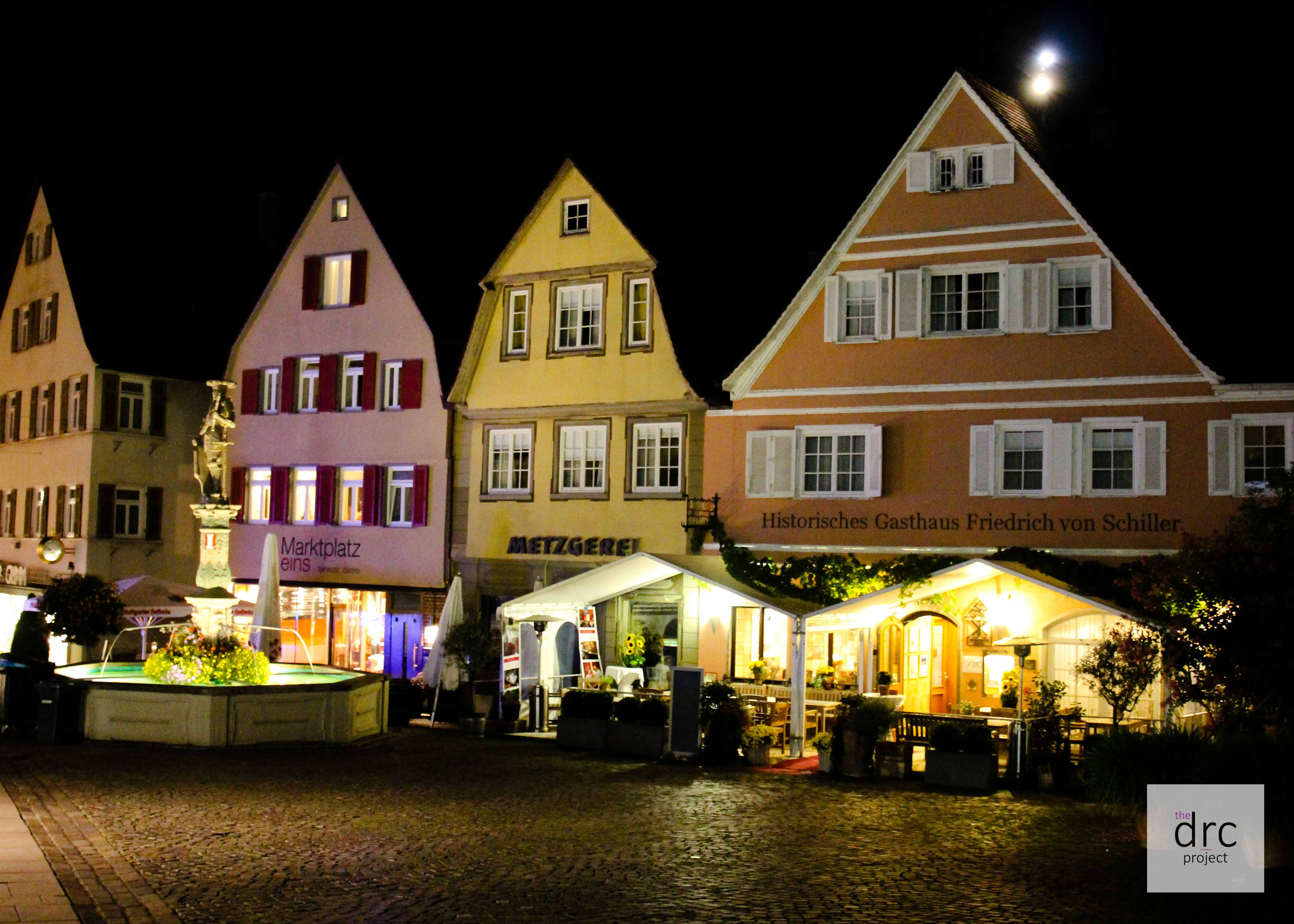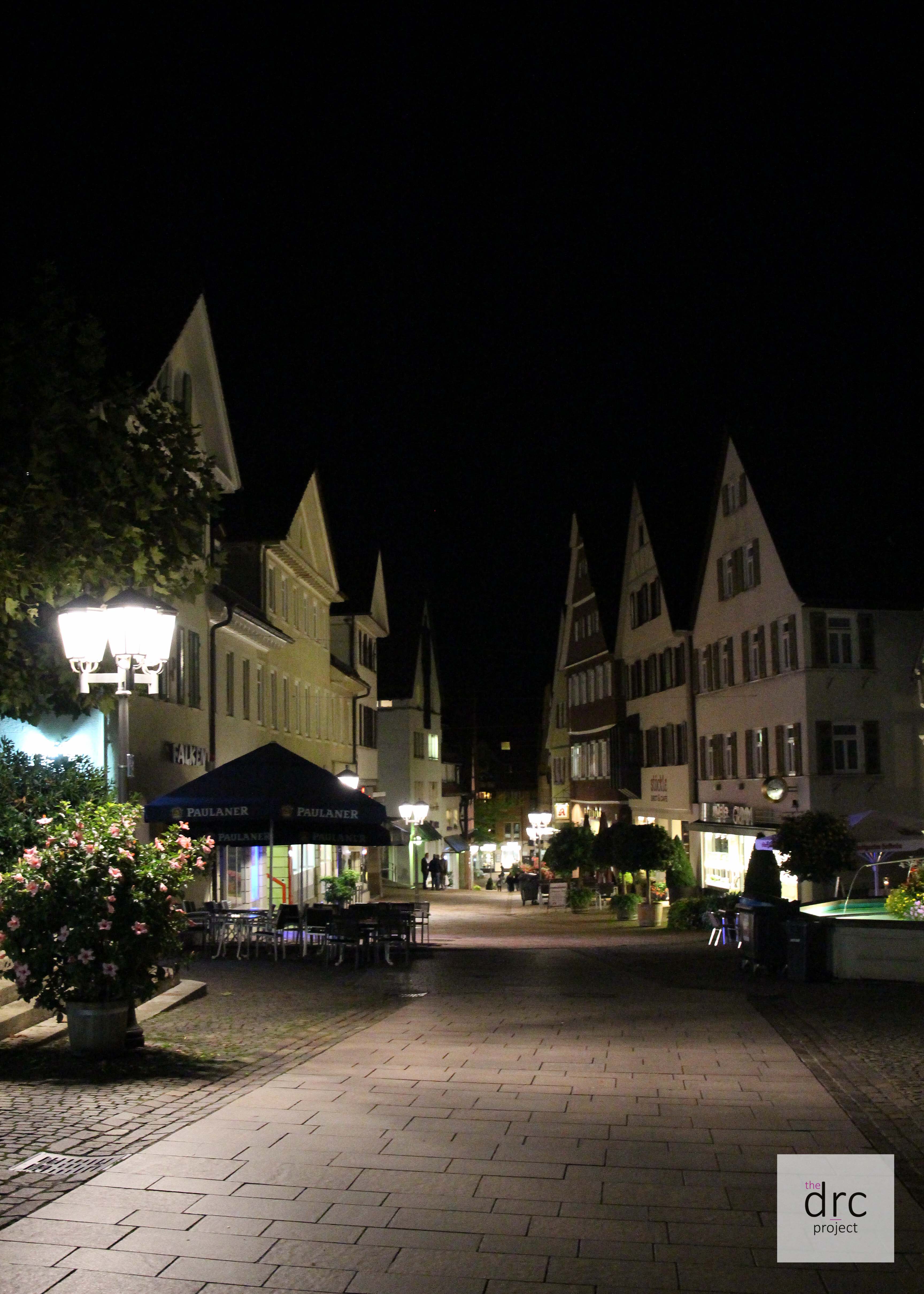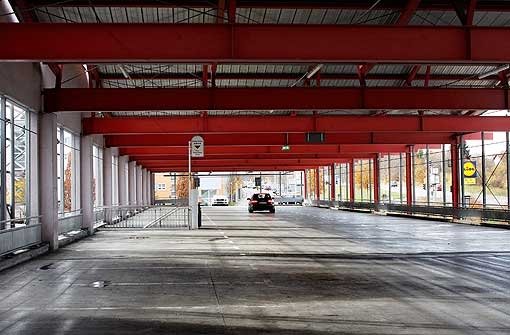Bietigheim-Bissingen station
- Franconia Railway ( 23.6 km ) ( KBS 780, 790.5
- Württemberg Western Railway ( 23.6 km ) ( KBS 770, 710.5
- Backnang- Bietigheim (km 25.7 ) ( decommissioned)
I7i12i13i15i15i16i17i20
The station Bietigheim- Bissingen ( to 31 December 1974 Bietigheim ( Wuertt ) ) is a railway junction where the Württemberg Western Railway separates from the Franconia Railway. With its eight station tracks it is the largest train station in the district of Ludwigsburg. He is served by regional trains and the lines of the Stuttgart S-Bahn S5 and S5 of the Karlsruhe Stadtbahn.
- 3.1 Regional Transport
- 3.2 S -Bahn
History
Following the Northern Railway
With the continued construction of the Northern Railway, the Stuttgart should connect with Heilbronn, the operation of Ludwigsburg up to Bietigheim could be taken on Bietigheim station on 11 October 1847. The train station was about two miles outside the city on Laiernwald. Efforts by the city government to build the station closer to the city, rejected the Directorate of State Railways. In addition to the reception building there was initially a building with other service apartments, a goods shed and a locomotive depot. On July 25, 1848, the commissioning of the remaining sub-section of the Northern Railway between Bietigheim and Heilbronn was.
Bietigheim is railway junction
According to the proposals of Charles Vignoles of 1843/44, the leading Bruchsal Western Railway near Tamm should be separated from the Northern Railway. But Oberbaurat Karl Etzel struck in July 1845 the right to have branched off the route further north - in Bietigheim. Here was the valley of the Enz, the crossing was inevitable to be bridged at its narrowest point. While according to Vignoles ' plans at the Bissinger Sagmuhle a 46 m high and 515 m long viaduct would have been necessary Etzel came out with only a 26 m high and 287 m long bridge. Despite a prolonged route could thus be saved 400,000 fl. The construction of the railway viaduct Bietigheimer trust the state railway its experienced design engineer to safely, and the Treasury agreed in February 1846.
The fact that Etzel was romantically involved with the daughter of originating from Bietigheim Württemberg Finance Minister Karl von Gärttner, whom he married in 1847, gave rise to speculation that Etzel his father- in-law proved a favor by making his home to the railway junction.
Since 1852, the Northern Railway from Stuttgart to Bietigheim had a second main track. The track of the Western Railway was built to the left of the reception building. The station was now an island station. The commissioning of the new line was held on 1 October 1853. On December 8, 1879, the first trains ran on the railway line Backnang- Bietigheim. Through this link, coming from Backnang freight trains could directly or Muehlacker direction Heilbronn are conducted and vice versa. At that time the Bietigheim station was the second largest train station Württemberg.
1887, settled the first factories in the Outer Bahnhofsvorstadt. Among other things, 1899, the linoleum works Nairn AG, a year later renamed in Germania Linoleum Werke AG. On the western side of Station Road (now Stuttgarter Straße ) were built residential and commercial buildings and a hotel. Also on Bissinger district was at the height of the station a settlement.
1910 suggested the company H. Balz & Co. of Stuttgart to leave a Trackless Electric trams run between the old town and the train station. The council conferred on the offer, but had to give reasons of cost, a rejection.
Reich and the Federal Railroad Time
1940 built the German Reichsbahn the Northern Railway between Ludwigsburg and floorcoverings three tracks. The already planned fourth track followed only 41 years later. With several air raids there was severe damage to the entire system. The railway line to Backnang was not rebuilt and shut down the section between Bietigheim and Beihingen - Heutingsheim. A remnant was as Ausziehgleis still use. The station building was erected makeshift again. With the electrification of the section Ludwigsburg- Bietigheim received on November 10, 1950 Following the Stuttgart suburb of traffic.
On January 1, 1975, merged the City and the community Bietigheim Bissingen an der Enz and formed the town of Bietigheim -Bissingen. This led to the renaming of the station. Colloquially be held the station name Bietigheim, as at May 31, 1981 to import the first S -Bahn in their new terminus.
Reception building
The first station building in its usual time round arch style probably originated from plans by Michael Knoll. It was two stories and had a tower with clock and two bells. The eight-axle construction was probably built from stone. On the 1st floor there was a cornice at the level of the window sills. Due to the lack of risalits, the continuous gable roof and the joint pattern the reception building was structured much horizontally. The center was emphasized by the four-axle central porch and the bell tower. The station building of 1847 decreed on the ground floor with two waiting rooms, an office for the station master, a cash room, a luggage room and a staff room. On 1st floor apartments were for railway staff.
1887 extended the station by an additional administration building. It was right next to the first station building and had a waiting room and a restoration.
1958 began the construction of the new station building, whose inauguration took place on 27 June 1961. Helmuth Conradi, who also designed the new Heidelberg Main Station, it planned as a two-story building with a one-story, right connected cultivation. The right lying flying roof in front of the lobby and the left connected is provided with a clock four-story tower, the same building visually. The collected windows of the reception building to emphasize the concrete skeleton. In the tower and upstairs there are service areas. The previous buildings were still exist and were demolished later.
Railway operation
The station Bietigheim- Bissingen is a railway junction. According to the Deutsche Bahn AG correspond to the train station category 2
From the south lead four main lines into the station. The two inner tracks are primarily the S-Bahn, the two outside the regional and long-distance transport. At the northern end of the station the Württemberg Western Railway separates from the Franconia Railway.
The tracks 1 and 2 freight tracks and have no platform. On track 3, the light rail start in the direction of Vaihingen ( Enz ) / Muehlacker / Pforzheim / Karlsruhe. Track 4 is the Vaihingen ( Enz ) regional trains coming towards Ludwigsburg / Stuttgart. On track 5, the S-Bahn trains begin to Ludwigsburg / Stuttgart. On track 6 end the S-Bahn before they are placed in the rear track field. On track 7, the regional trains in the direction of Vaihingen hold ( Enz ) / Karlsruhe / Heidelberg. Track 8 is coming from Heilbronn regional trains assigned to Ludwigsburg / Stuttgart. The tracks 9 and 10 serve the regional trains towards Heilbronn.
Numerous tracks are available as parking and maneuvering space for freight trains.
The Bietigheim- Bissinger signal box is a relay interlocking type DRS60.










